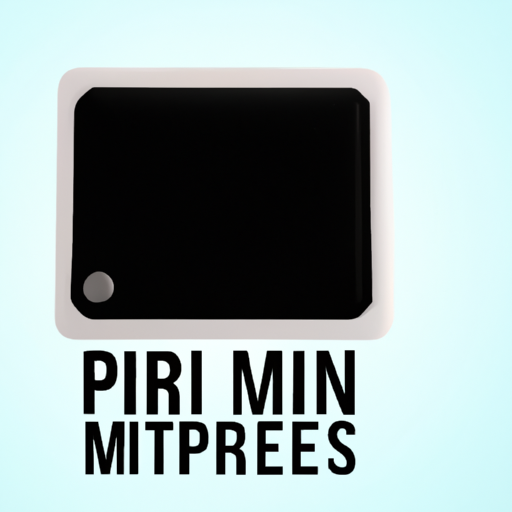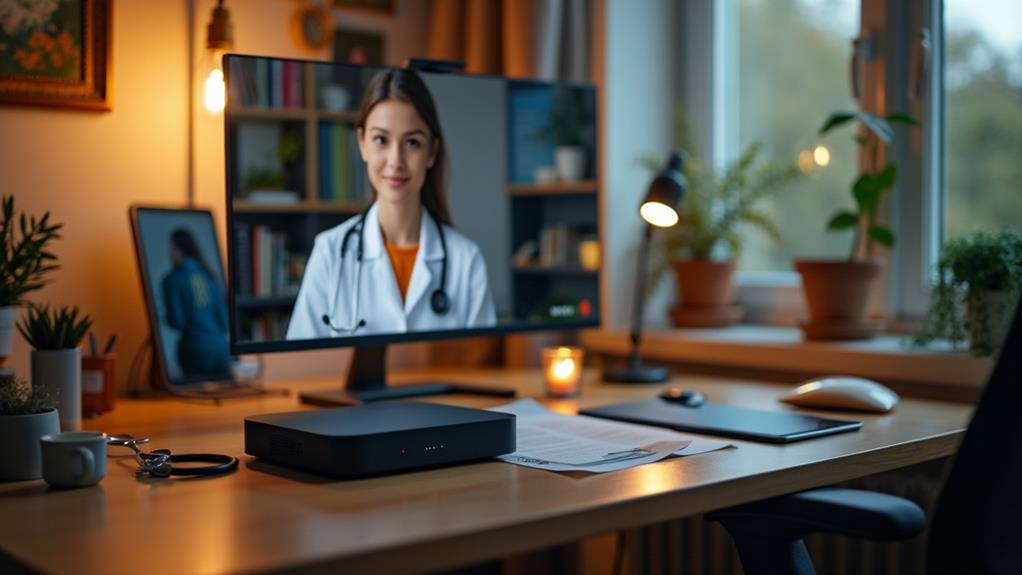



Are you in search of the perfect computer for programming? Look no further than mini PCs! Compact, portable, and powerful, mini PCs offer a tempting alternative to traditional desktop computers. But the question remains, are they truly up to the task of handling complex programming projects? In this article, we will explore the benefits and drawbacks of using mini PCs for programming, helping you make an informed decision about the best computer setup for your coding needs. So, let’s dive into the world of mini PCs and find out if they are the right fit for your programming journey.
Advantages of Mini PCs for Programming
Portability
One of the main advantages of mini PCs for programming is their portability. These small and compact devices can easily fit into your backpack or briefcase, making them ideal for on-the-go developers. Whether you are working from a coffee shop, traveling, or simply prefer to have a portable setup, a mini PC can provide you with the flexibility you need.
Space-saving
Mini PCs are also perfect for programmers who have limited desk space. With their small form factor, they can fit into tight spaces or be mounted on the back of a monitor using a VESA mount. This space-saving feature allows you to create a clutter-free workspace and optimize the available area.
Energy efficiency
Another advantage of mini PCs is their energy efficiency. Compared to traditional desktop computers, mini PCs consume significantly less power. This not only helps you save on electricity bills but also reduces your environmental footprint. Additionally, the low power consumption means less heat is generated, resulting in quieter operation and improved overall reliability.
Performance Considerations
Processor power
When it comes to programming, having a powerful processor is crucial for efficient code compilation and execution. Mini PCs offer a range of processor options, including Intel Core i3, i5, and i7, as well as AMD Ryzen processors. Depending on your specific programming needs, you can choose a mini PC with the appropriate processor power to ensure smooth performance.
RAM capacity
The amount of RAM available in a mini PC is another important factor to consider. Programming often involves running resource-intensive applications and multitasking. Therefore, having an ample amount of RAM is essential for seamless program execution. Mini PCs typically offer a range of RAM capacities, from 4GB to 32GB and beyond, allowing you to choose the configuration that meets your programming requirements.
Storage options
Storage is another crucial consideration for programming. Mini PCs usually come with various storage options, such as solid-state drives (SSD) and hard disk drives (HDD). SSDs provide faster data access and improved overall system responsiveness, making them suitable for programmers who require quick file access and compilation times. However, if you need large storage capacities at a lower cost, HDDs can be a viable option.
Graphics capabilities
While programming may not always require extensive graphics capabilities, certain programming tasks such as game development or visual simulations may rely heavily on the GPU. Mini PCs offer different graphics card options, ranging from integrated graphics to dedicated GPUs. Depending on your specific programming needs, you can choose a mini PC with the appropriate graphics capabilities to ensure optimal performance.
Operating System Compatibility
Windows
Many programmers prefer working with the Windows operating system due to its wide range of software compatibility and user-friendly interface. Most mini PCs are compatible with Windows, allowing you to run the latest versions of programming tools and environments seamlessly. Whether you are using Visual Studio, IntelliJ IDEA, or any other popular programming software, you can expect excellent compatibility on a mini PC running Windows.
macOS
For programmers who prefer Apple’s ecosystem, some mini PCs are compatible with macOS. This allows you to enjoy the benefits of macOS, such as its intuitive interface, Unix-based shell, and extensive developer tools like Xcode. With a mini PC running macOS, you can harness the power of Apple’s ecosystem while benefiting from the compact form factor and convenience of a mini PC.
Linux
Linux has always been a popular choice among programmers due to its versatility, stability, and extensive support for programming languages. Many mini PCs support Linux distributions, such as Ubuntu, Fedora, and Debian, offering a seamless programming environment. With Linux, you have access to a vast repository of development tools, libraries, and frameworks, making it an excellent choice for programmers of all levels.
Connectivity Options
USB ports
USB ports are essential for connecting peripherals, such as keyboards, mice, external storage devices, and programming hardware. Mini PCs generally come with multiple USB ports, allowing you to connect all the necessary tools and devices. Whether you need to connect a USB debugging device for mobile app development or an Arduino board for IoT programming, the availability of USB ports on mini PCs ensures you have the connectivity you need.
HDMI output
HDMI output is a crucial feature for programmers who require an external display for improved productivity or testing purposes. Mini PCs usually come equipped with HDMI ports, enabling you to connect your mini PC to a larger monitor or projector easily. With the HDMI output, you can extend your workspace and take advantage of larger screen real estate for code editing, debugging, and running applications.
Ethernet
Ethernet connectivity is essential for programmers who require a stable and high-speed internet connection. While many mini PCs come with built-in Wi-Fi, having an Ethernet port provides a more reliable and faster internet connection, especially in situations where Wi-Fi signals may be weak or congested. Whether you are downloading large code repositories or collaborating with remote team members, the Ethernet port on a mini PC ensures seamless networking.
Wireless connectivity
In addition to wired connectivity options, mini PCs also offer wireless connectivity through Wi-Fi and Bluetooth. Wi-Fi allows you to connect to wireless networks, providing flexibility to work from anywhere within the network range. Bluetooth connectivity allows you to connect wireless keyboards, mice, speakers, and other peripherals, minimizing cable clutter and adding convenience to your programming setup.
Expandability and Upgradeability
RAM
Many mini PCs offer expandable RAM options, allowing you to upgrade your system’s memory as your programming needs grow. This expandability ensures that you can handle more demanding programming tasks and run multiple resource-intensive applications simultaneously without sacrificing performance. Being able to upgrade your RAM provides longevity to your mini PC, allowing you to keep up with evolving programming requirements.
Storage
Depending on the specific model, mini PCs may offer options for expanding storage capacity. This allows you to add more storage to meet your growing programming needs. Whether you need additional space for storing large datasets, virtual machine images, or multimedia files, having the ability to upgrade the storage capacity of your mini PC ensures that you have ample room for all your programming projects.
Graphics card
While mini PCs generally have limited options for upgrading graphics cards due to their compact form factor, some models offer the possibility of upgrading or adding a dedicated graphics card. This can be advantageous for programmers who engage in graphics-intensive tasks, such as game development or rendering. The ability to upgrade the graphics card in a mini PC allows you to ensure optimal performance and compatibility with specialized programming tools.
Software and IDE Support
Compatibility with programming languages
Mini PCs support a wide range of programming languages, making them suitable for programmers who work with various languages or wish to explore new ones. Whether you are programming in Python, Java, C++, or any other popular language, you can be confident that your mini PC will provide excellent compatibility. Additionally, many mini PCs come preinstalled with development environments, making it convenient to get started right away.
IDE availability
Programming often requires the use of integrated development environments (IDEs) to write, debug, and test code. Mini PCs support popular IDEs such as Visual Studio Code, IntelliJ IDEA, Eclipse, and Xcode. Whether you prefer a lightweight IDE or a feature-rich one, you can find one that suits your programming style and workflow. With the availability of IDEs on mini PCs, you can enjoy a seamless programming experience without compromising on performance.
Use Cases for Mini PCs in Programming
Web development
Web development often involves working with multiple programming languages, frameworks, and tools. Mini PCs provide an efficient and portable platform for web developers, allowing them to code, design, and test websites and web applications. Whether you are working on front-end development using HTML, CSS, and JavaScript or back-end development with languages like PHP, Python, or Node.js, a mini PC offers the necessary performance and flexibility.
Mobile app development
Mini PCs are ideal for mobile app development due to their versatility and portability. They can handle the intensive resource requirements of mobile app development frameworks and emulators while providing developers with the convenience of a compact setup. Whether you are developing for iOS or Android, a mini PC running the respective operating system or using cross-platform development tools can cater to your mobile app development needs.
IoT development
Developing for the Internet of Things (IoT) often involves working with microcontrollers, sensors, and various hardware components. Mini PCs with their connectivity options, such as USB and GPIO (General Purpose Input/Output) pins, can seamlessly integrate with IoT devices and provide a development platform to program and test IoT applications. The small form factor of mini PCs is especially advantageous when working with limited physical space or when deploying IoT solutions in remote locations.
Data analysis
Data analysis and machine learning require processing large datasets and running resource-intensive algorithms. Mini PCs with their powerful processors, ample RAM, and storage options can handle the computational demands of data analysis tasks. Programming languages such as Python and R, along with frameworks like TensorFlow and PyTorch, are well-suited for performing data analysis on mini PCs. With their compact size, mini PCs can be an excellent choice for data scientists who need a dedicated development environment.
Considerations for Specific Programming Needs
Game development
Game development often involves working with complex graphics, physics simulations, and resource-intensive engines. While mini PCs can handle many aspects of game development, it is important to choose a model with a capable graphics card and sufficient RAM. Additionally, for virtual reality (VR) game development, a mini PC must meet the necessary hardware requirements for VR headsets to ensure smooth gameplay and testing.
Artificial intelligence
Artificial intelligence (AI) programming often involves running deep learning models, training neural networks, and processing vast amounts of data. Mini PCs with high-performance processors, ample RAM, and powerful graphics capabilities can handle AI development tasks effectively. Additionally, considering the space and power requirements of AI computing, mini PCs can offer a cost-effective and efficient alternative to larger, specialized AI workstations.
Virtual reality
Virtual reality development requires powerful hardware to provide an immersive experience. While mini PCs may have limitations in terms of upgradability, some models with capable graphics cards and compatible VR headset connectivity can be suitable for virtual reality development. However, it is crucial to ensure that the mini PC meets the recommended hardware specifications of VR platforms to ensure optimal performance and compatibility.
High-performance computing
High-performance computing (HPC) involves running complex simulations, scientific calculations, and parallel processing tasks. While mini PCs may not be the primary choice for HPC due to their compact size, certain models equipped with powerful processors and ample RAM can handle moderate HPC tasks. However, for resource-intensive HPC workloads, dedicated HPC clusters or cloud services may be more suitable.
Cost-Effectiveness
Affordability
Compared to traditional desktop computers or laptops with similar specifications, mini PCs are often more affordable. They provide a cost-effective option for programmers who require a dedicated development environment without breaking the bank. Whether you are a student, an independent developer, or part of a small team, choosing a mini PC can help you save money while still having access to the necessary hardware resources.
Long-term savings
In addition to the initial affordability, mini PCs also offer long-term savings. Due to their energy-efficient design, they consume less power, resulting in lower electricity bills over time. Moreover, mini PCs often have longer lifespans compared to laptops or desktop computers, providing you with extended usability and reducing the need for frequent hardware upgrades. By investing in a mini PC, you can enjoy cost savings throughout its lifespan.
Limitations and Potential Challenges
Limited hardware customization options
While mini PCs provide some expandability and upgradeability options, they generally have limited hardware customization compared to traditional desktop computers. The compact form factor and specialized designs of mini PCs may restrict the addition of certain components or upgrading specific hardware components. Therefore, it is important to choose a mini PC that aligns with your programming needs and offers the necessary flexibility for future growth.
Less power for resource-intensive tasks
Due to their smaller size and power-efficient design, mini PCs may have limitations in terms of processing power and cooling capabilities compared to larger desktop computers or workstations. Resource-intensive programming tasks, such as compiling large codebases or running complex simulations, may take longer to complete on mini PCs. It is important to consider the specific requirements of your programming projects and choose a mini PC with the appropriate specifications to ensure smooth performance.
Limited support for multiple displays
Mini PCs often have limited support for multiple displays due to their compact size and limited graphics capabilities. While many mini PCs offer at least one HDMI output, connecting multiple monitors may not be possible or may require additional adapters or docking stations. If you require multiple displays for your programming workflow, it is important to check the supported display configurations of the mini PC before making a purchase.
In conclusion, mini PCs can be a great choice for programmers due to their portability, space-saving design, energy efficiency, and compatibility with popular operating systems. They offer sufficient performance for most programming tasks and provide a cost-effective solution for developers. However, it is important to consider the specific requirements of your programming projects and choose a mini PC that aligns with your needs. By understanding the advantages, limitations, and considerations for different programming needs, you can select the right mini PC that enhances your programming experience and boosts your productivity.
Disclosure: As an Amazon Associate, I earn from qualifying purchases.






